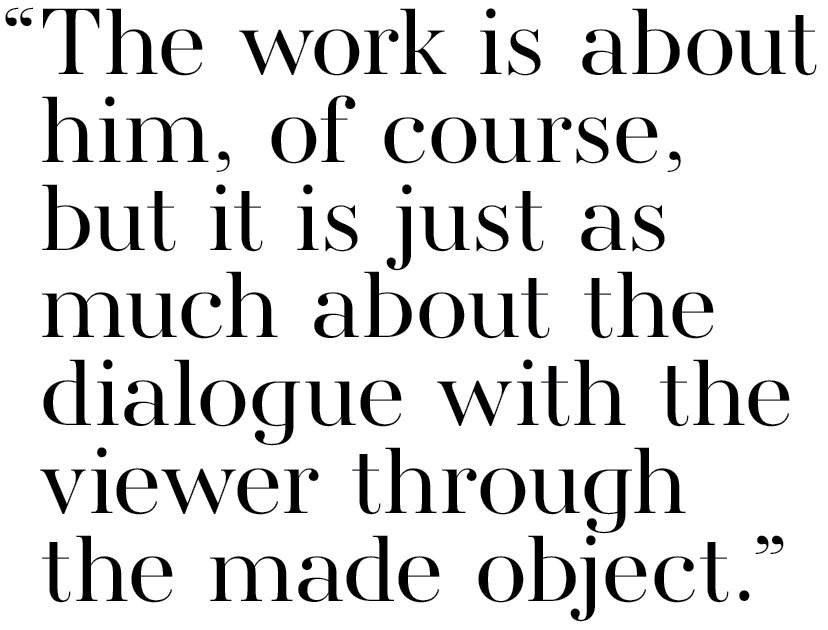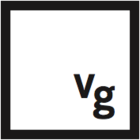Jacques Jarrige puts the Divine into Design by Benjamin Genocchio
Jacques Jarrige has several childhood memories of his father, but the most indelible is the time when his father gave him a book about sculpture.
“It was, to me, like a door to walk through,” he says in English heavily accented with his native French. “This gift he gave me was more than a book, it showed me the way to engage, to live, be alive, and propose something about a way of living through artwork.”
Jarrige was 18 and the book was a dictionary of sculpture written by a curator at the Louvre. “At this time I didn't make sculptures, I only drew and painted but from that day forward I realized my mission in life was to be a sculptor.”
Jarrige is a man of few words. He communicates mostly through his work, softly, and subtly about things that are important to him: spirituality, the divine, the natural environment, and a desire for a shared connection to people and community. He is a humanist, a dreamer, in short, an idealist.
Jarrige’s collectible furniture and lighting are immediately pleasing to look at but rather difficult to describe. It is sinuous, organic, and at times serene, but always profoundly sculptural.
No object he makes looks the same from any one angle, frequently they look quite different, which is a testament to the way he thinks as an artist — three-dimensionally, and in 360 degrees.
“Jacques' work is important because it touches our shared humanity, and is far from the manufactured discourse of so much of our world today,” says Valerie Goodman, his friend, and dealer. “It talks about something universal, a quest that takes us away to a place more serene. The work is about him, of course, but it is just as much about the dialogue with the viewer through the made object.”
 |
In 2022 Goodman published a book titled Jacques Jarrige about his work, process, and collaborations which remains the definitive study of his designs. It took two and a half years to produce, with essays by a very eclectic cast of authors including American curator and author Glenn Adamson, a patient from the psychiatric hospital where Jarrige has a studio and has run art classes for the past 30 years, prize-winning French author Maylis de Kerangal (who is also a friend and collector of Jarrige’s work) and a French priest. “We wanted the book to talk about creativity, collaborations, and art broadly,” Goodman says.
When I spoke to Jarrige he was in his studio east of Paris and had just finished a new body of work consisting of LED-lit wall sculptures for the Hamptons Fine Arts Fair in July, as well as hanging aluminum sculptures, both of which will adorn the booth along with his furniture. He is busier than ever, working on a group of 10 large site-specific sculptures for a solo show next February at the St. Gereon Basilica in Cologne. Jarrige has previously explored expressions of faith and spirituality in his art, creating sculpture for the Church of Saint John the Divine in New York, as well as furniture and sculpture for the newly rebuilt Notre-Dame Cathedral in Paris.
Though Jarrige’s shapes and forms are rather simple, their simplicity belies the existential complexity of his thinking. His designs are initially arrived at through sketches and drawings or a maquette made by hand with a little piece of aluminum or wood. “Sometimes I have a feeling that my hand is being guided without me knowing it,” he says, gesturing towards the divine as a source of inspiration. “I was at first surprised by this way of working but it was my disposition and the way I wanted to work.
I do little things, small pieces, then a big one.”
Jarrige studied architecture for four years at the École Nationale Superieure des Beaux-Arts in Paris but was put off by the relentlessly geometric, Modernist doctrine of the program. He yearned for something organic, spiritual, and handmade. His next step was to study decorative arts and set about experimenting to find his own way of working. “I had zero technical vocabulary and had to find my own way and my own processes,” he says. The material gives him the final form, Jarrige believes.
“I have to be in this dialogue with the material from the beginning,” he says. He works with wood but more recently has experimented with metals, like aluminum, for sculpture. “I have to be in a kind of a dance with the material at one time, like a real human relationship, day after day. I directly work on and into solid wood pieces. There are no corrections, so whatever happens happens. The piece has all the marks, and scars of the process, good and bad.”
Jarrige likens his process (be it for collectible furniture or sculpture) to an intense conversation. “If it is going well for me. I am in this position to collect the gift of the dialogue that the wood or the metal is giving me. I am working away trying to achieve something but I am also waiting to receive the gift of the material. It is this release that is the final design or object for me. I have to feel like I am in a position to participate in something when I work, to meet the dialogue with the material.”
He had his first show in 1991 with En Attendant les Barbares, the legendary Parisian design gallery that launched Garouste & Bonetti and Eric Schmitt. He was 29 at the time and the youngest artist then attached to the gallery. He formed an important friendship with Frederic de Luca, one of the co-founders of the gallery who helped advise and guide him, and over the decades built up an impressive repertoire of designs that includes his Cloud Tables with lacquer interior, the Adam and Eve Lamps, the Drop Leaf Cabinet, Torquemada Console Table, the bronze and oak Odalisque Coffee Table, and his iconic lighting design, the Leda Floor Lamp.
Part of his work is about understanding and appreciating the intrinsic properties of his materials. But part of it is also innocent, a release of pure creativity, a natural state of expression. “I try not to think too much and let feelings dictate the forms,” he says. He was inspired and encouraged to work this way by experiences at the psychiatric hospital where one day a week he supervises art and woodwork classes. “I have learned so much from them [the patients] about purity, innocence, and the unconscious. The mistakes they make are part of the identity of a piece, the humanity, and even if it has no purpose, or there is something that doesn't work well, it doesn't matter.”
Jarrige believes the purity of the gesture is more important than the final form. “Form is subservient to the gesture, and is probably the most important thing in my work. It is the original creative act, an intuitive understanding of the purpose of the piece.” But how does this work for collectible design — it has to function. “Yes of course,” he says, “but this is part of the original gesture, not something that comes before or after it. The gesture embodies the function in its own unique and original way.”
Goodman has been closely collaborating with Jarrige for the past 13 years and she knows what he means. “His work is distinctive by the consistency of its vocabulary,” she explains. “The use of a unique chosen material, whether wood, metal or other, there is this attention to simplicity which highlights the vulnerability of the gesture. With this approach, the viewer can glimpse at something unknown, feel the thrill of discovery and reflect on one's vulnerability. His works offer the pleasure of surprise without being intrusive.”
There is something true about this. Looking at Jarrige’s Leda lamp in the main room at Goodman’s gallery in New York one is immediately struck by the sense of what can only be described as unexpected movement, coupled with the quiet balancing of the shade atop the irregular base, the sudden reflection of the light or a shadow that brings the surroundings alive. There is discovery and vulnerability, even beauty.
Goodman was introduced to Jarrige by a common friend. “We met in Paris in June 2009 as I was planning to open my gallery and focus on contemporary artists and designers. He showed me his current body of work, the Cloud series and we immediately connected. I then visited his home where I discovered the depth of his work spanning 30 years.”
Goodman has so much faith in Jarrige that in 2015 she invited him to design the interior of her home in the Hudson Valley area. “It was an extraordinary experience because I had never owned a house or bothered to decorate one before,” she says. “Circumstances were right and it ended up being a first for me and Jacques who had done renovations before but never to that extent, a whole house and everything in it.”
The home gives a unique window into how the artist sees his collectible design and lighting pieces within a domestic context. Most striking, initially, is how informally relaxed everything looks. The simplicity of the forms, and lack of clutter gives the viewer both the space and time to interact, to slow down, and with each passing moment reassess a viewpoint and relationship to the objects in rooms. “There is always more to see at any given time in any of his pieces,” Goodman says, “I never get bored.”
